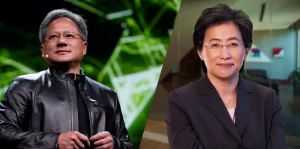Introduction:
In a bid to bolster its semiconductor industry and maintain a competitive edge amidst global technological advancements, Japan has announced a substantial investment in optical technology.
With the Ministry of Economy, Trade and Industry (METI) spearheading this initiative, approximately 45.2 billion yen ($307 million) will be allocated in subsidies to foster the development of optical technology for chip applications.
This strategic move underscores Japan’s commitment to innovation and collaboration in the face of growing competition, particularly from China, in the realm of advanced technologies.
Follow us on LinkedIn for everything around Semiconductors & AI
Japan Optical technology for Chip Applications?
Optical technology for chip applications refers to the utilization of light, instead of traditional electronic signals, for various functions within semiconductor chips. This technology primarily involves the manipulation, transmission, and detection of light to perform tasks such as data communication, signal processing, and sensing within integrated circuits.
Key components of optical technology for chip applications include:
1. Optical Interconnects:
Optical interconnects replace traditional metal wires used for data transmission between different components within a chip or between chips. Light signals, typically in the form of lasers or light-emitting diodes (LEDs), are used to transmit data optically over short distances. This enables faster data transfer rates and reduced power consumption compared to electrical interconnects.
2. Optical Sensors:
Optical sensors integrated into semiconductor chips enable the detection and measurement of various physical parameters such as light intensity, temperature, pressure, and chemical concentrations. These sensors utilize light to interact with the surrounding environment and convert optical signals into electrical signals for processing.
3. Optical Signal Processing:
Optical signal processing involves the manipulation of light signals within semiconductor chips to perform tasks such as filtering, modulation, amplification, and switching. Photonic devices like optical modulators, switches, and routers are integrated into chips. They process optical signals and perform complex operations quickly and efficiently.
4. Optical Computing:
Optical computing utilizes light-based techniques for performing computational tasks within semiconductor chips. This includes optical logic gates, optical memory elements, and other photonic components that enable parallel processing and high-speed computation. Optical computing has the potential to significantly enhance the performance and efficiency of certain computing tasks compared to traditional electronic computing methods.
Overall, optical technology for chip applications offers numerous advantages over conventional electronic approaches, including higher data transfer speeds, lower power consumption, reduced electromagnetic interference, and increased integration density. As semiconductor technology continues to advance, the integration of optical components and techniques into chip designs holds great promise for enabling next-generation devices with enhanced performance and functionality.
Read More: Chinese Scientists Slow Down Light to Propel the Future of Photonic Chips
The Drive for Optical Technology:
The semiconductor industry has long been driven by the pursuit of faster processing speeds, enhanced transmission capabilities, and reduced power consumption. Optical technology presents a promising avenue for achieving these objectives by leveraging light for signal transmission within chips.
Light-based communication offers significantly higher data transfer rates and consumes less power than traditional electronic signals. This addresses critical industry challenges.
Read More: China Has Developed 72-qubit Superconducting Quantum Chip Using Foreign Tools
Key Players and Partnerships:
Several prominent Japanese companies, including NTT, NEC, Furukawa Electric, and Shinko Electric, are poised to participate in this groundbreaking initiative.
These industry leaders bring diverse expertise and resources, positioning Japan as a formidable force in optical technology for semiconductors. Collaborations with global giants like Intel and SK Hynix underscore Japan’s commitment to fostering international partnerships for technological innovation.
Read More: 7 Key Branches of Semiconductors: Leading Companies & Applications
Future Implications:
Japan’s investment in optical technology represents more than just a financial commitment; it symbolizes a strategic shift towards future-proofing its semiconductor industry.
By embracing cutting-edge technologies and fostering collaborative efforts, Japan aims to not only maintain its position as a key player in the global semiconductor market but also drive significant advancements that could reshape the industry landscape.
Optical technology has the potential to be a game-changer, offering unprecedented opportunities for innovation and market disruption.
Read More: 7 Emerging Trends in Quantum Semiconductor Devices
Conclusion:
Japan is embarking on a journey to utilize light in semiconductors, marking a new era of innovation. With significant investments and strategic partnerships, Japan aims to excel in the semiconductor industry and drive global technological advancement. As the world eagerly awaits the outcomes of this initiative, one thing remains certain. It is Japan’s commitment to push the boundaries of possibility will continue to drive progress and inspire innovation on a global scale.




